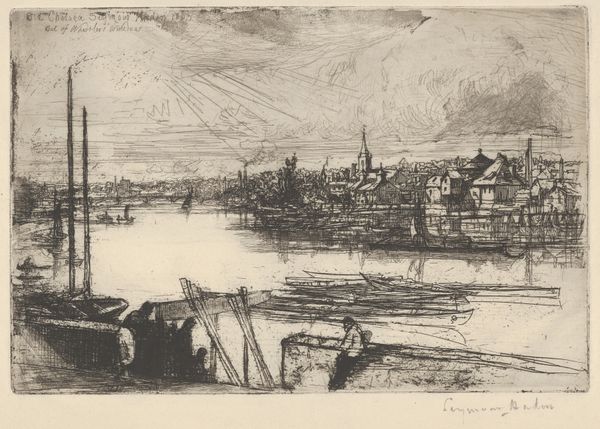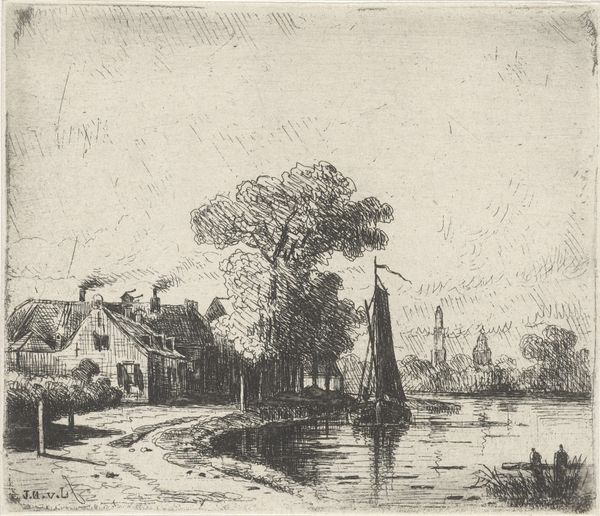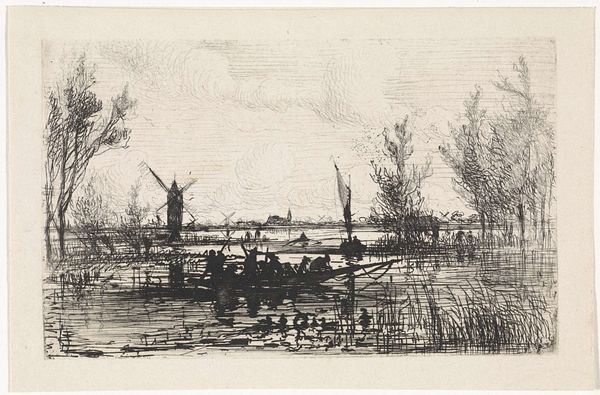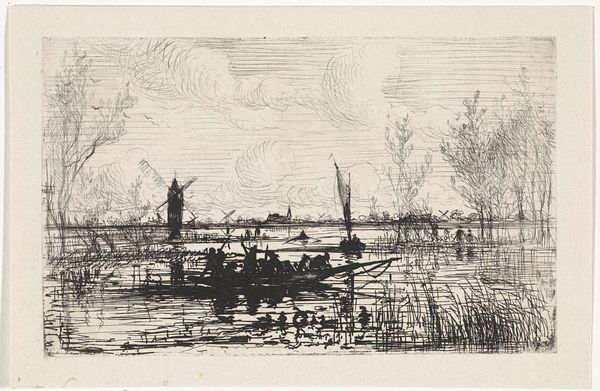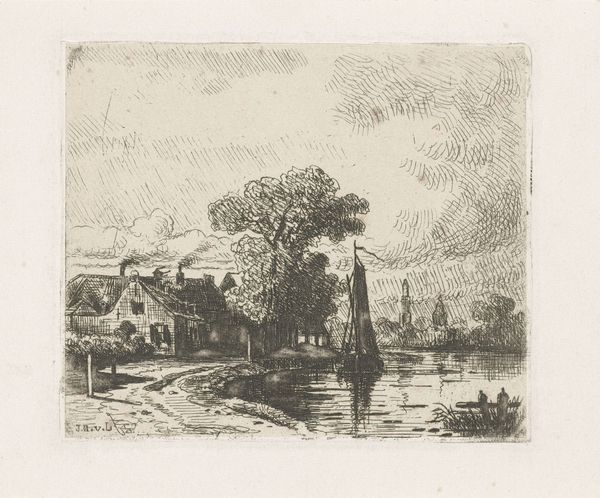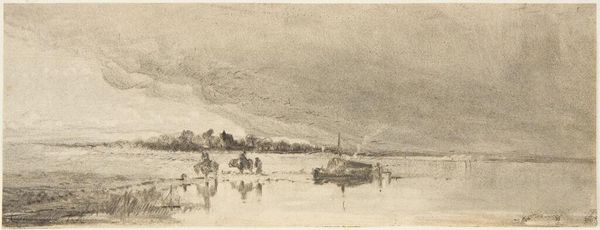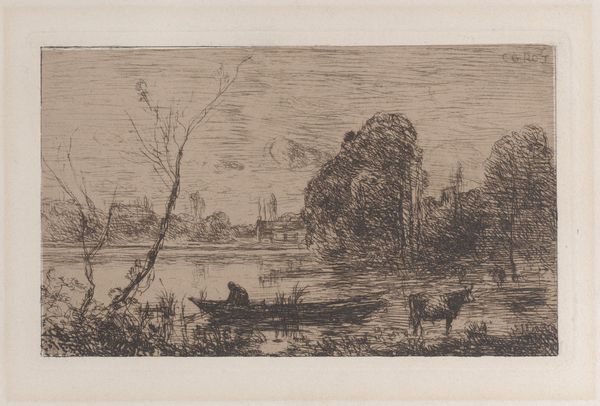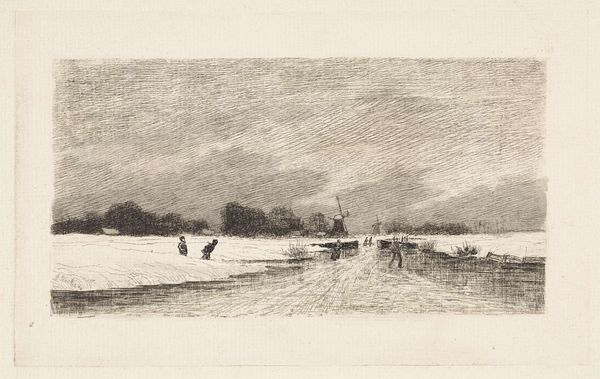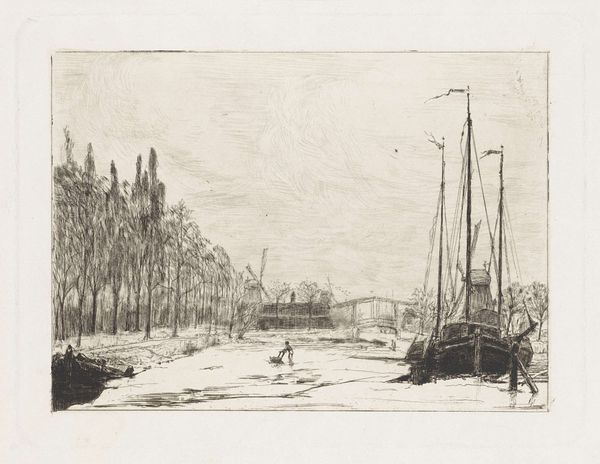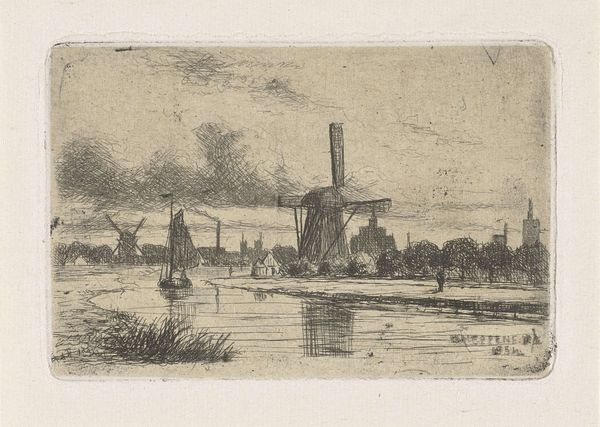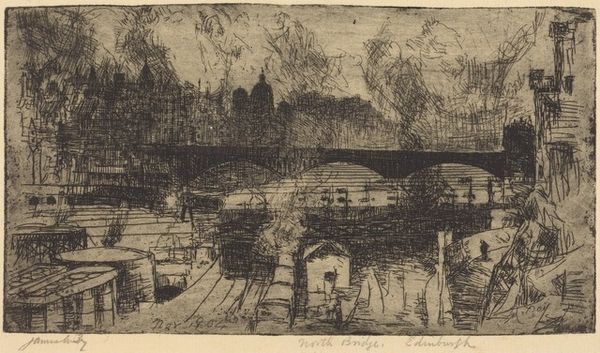
drawing, print, etching
#
drawing
# print
#
impressionism
#
etching
#
landscape
#
cityscape
Copyright: Public Domain: Artvee
Curator: Looking at this etching, "View of Rouen" by Camille Pissarro from 1884, I’m immediately drawn to its rather somber moodiness. The sky is turbulent and dark. Editor: Yes, the tonality certainly strikes me as rather melancholic. But I'm intrigued by how Pissarro captures a bustling port scene using a network of delicate, almost frenetic lines. It reflects the industrial growth and vitality of the time, but also a sense of its ephemeral nature, as Rouen's industry shaped its cultural identity. Curator: The almost vibrating lines lend an emotional depth and ambiguity. There's the obvious portrayal of a port city, yet the reflection of the architectural symbols evokes a deeper significance—Rouen’s cultural and spiritual heritage anchored amidst change. Editor: Exactly, consider the composition. We have figures walking in the foreground that connect the viewer to the scene. This speaks to Impressionism’s focus on modern life and capturing immediate experience and perception, not just aesthetic beauty, and a burgeoning middle class engaging with and changing that space. Curator: What also captivates me is Pissarro’s mark-making—the etched lines suggesting forms more than defining them directly. This leaves much open to interpretation. The river reflections become almost like Rorschach tests, hinting at hidden layers of the urban subconscious, maybe suggesting both visible and invisible layers of change on community consciousness. Editor: I see your point. The etching medium itself is telling; it's reproducible. These prints allow Pissarro’s visions of modernity, industrial development, and working-class life to circulate and reach an expanded audience—fueling broader social dialogue. Curator: Indeed, and what could be missed are those walking figures down by the riverside: archetypes that allow an observer's entry to an emotive link into the artist’s view, creating that symbolic dialogue between self, and scene, past, and present. Editor: Thinking about Pissarro’s intention for exhibiting in alternative venues, or founding cooperatives; it all signals that accessibility matters. Even the moody palette of etching gives this art relevance by expanding dialogues, not limiting to wealthy salons. Curator: Reflecting on "View of Rouen," it resonates now more than ever: an atmospheric vision evoking cultural continuity. The symbol of a landscape enduring socio-economic waves. Editor: It invites us to see our present moment reflected back, transformed into an enduring dialogue—one made for society itself.
Comments
No comments
Be the first to comment and join the conversation on the ultimate creative platform.
